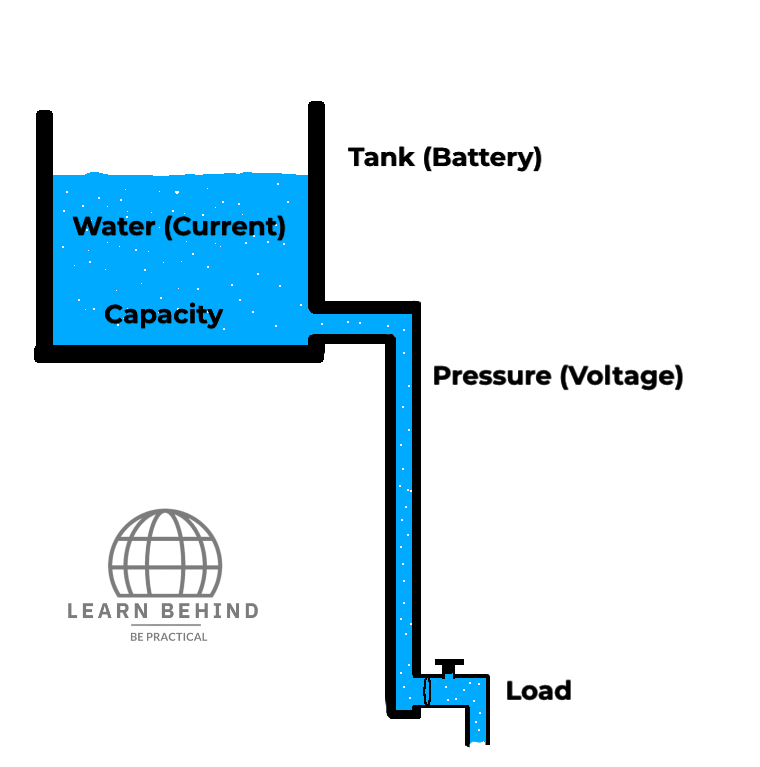Home
Tutorial's
Image collection
Calculator
Projects
MCQ's
3d Models
Invention Hub
How it works
Download Our app
(Last updated on 12-09-2024)
Module 4: Electric potential
Electric potential is also known as electrostatic potential or voltage. It refers to the amount of work energy needed per unit of electric charge to move a charged particle in an electric field, from a reference point to a particular spot.

As we discuss in Module 3, imagine a water pipe as a conductor. The pressure of water is voltage, as one end of the pipe has high pressure and another end has low pressure. Similarly, a point with a higher electric potential has more potential energy for a charged particle than a point with a lower electric potential. As we discuss pressure, drive the water to flow the same as The voltage difference is the driving force that causes electric current to flow in a circuit.
Electric potential is measured in volts (V). The difference in electric potential between two points is called a voltage difference or potential difference. As it is a scalar quantity, it has only magnitude (a number of volts) and doesn’t have a direction (like north-south or direction of flow), whereas current is a vector quantity; it has both magnitude (how much current flows) and direction (the path flow of current).
Quantitatively, electric potential is defined as under:
The energy of the electric potential per unit charge is the electric potential at a given point.
Electric Potential, V=Electric potential energy/charge=W/Q.
The SI unit of energy or work is 1J and that of charge is 1C, so the SI unit of electric potential is 1J/1C, which is also called 1Volt.
IIt means that electric potential at a point of 10 volts, if we place a charge of 1 c at that point, the charge will have electric potential energy of 10 joules.
2.1 Potential difference
Assuming two points One point has 10V notes as point A, and another point has 5V notes as point B. Then two points are connected with a conductor, and voltage flows from 10V to 5V. As we imagine that the water flows from higher pressure to lower pressure, similarly, the voltage is applied, and the current carriers flow from negative to positive as charges are negatively charged, so at negative it gets repelled and gets attracted to the positive side. Similarly, the charges flow from point B to point A.

Related articles
